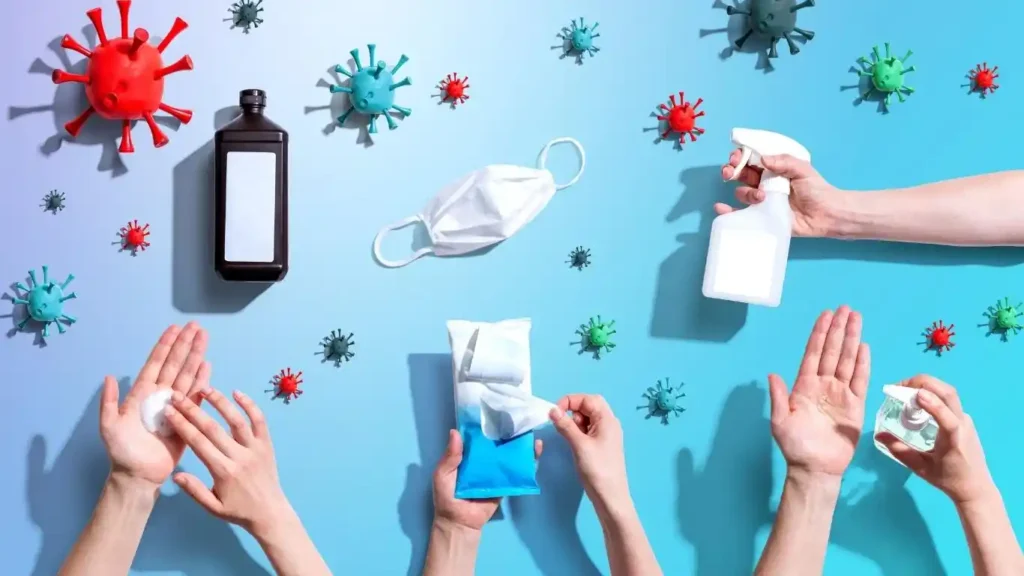Introduction:
We touch doorknobs, phones, and shopping carts every single day without thinking twice. But what if those everyday items were covered in tiny, invisible germs? The truth is, bacteria live almost everywhere—and they love to cling to our hands. These germs can lead to colds, stomach bugs, and even more serious illnesses.
Now, imagine if you could cut down your contact with them without changing your whole lifestyle. That’s where learning to Skip the Germs comes in. With just a few small habit changes, you can protect yourself and your family while still doing all the things you love.
Wash, Wipe, Repeat: Build Better Hand Habits
Keeping your hands clean is the first and best way to Skip the Germs. Studies show most germs spread from hand to mouth or nose. That means everything you touch can be a pathway to sickness.
But don’t worry—building good hand hygiene habits doesn’t have to be a chore. Teaching kids to wash hands after playing, using sanitizer after touching public surfaces, and avoiding face touching can all make a big difference.
The Right Way to Wash
Many people think a quick splash does the trick—but it doesn’t.
-
Always wash with soap and warm water
-
Scrub for at least 20 seconds (sing the “Happy Birthday” song twice)
-
Don’t forget thumbs and under fingernails
When to Wash or Sanitize
Knowing when to clean your hands is just as important as how.
-
After using the restroom
-
Before eating
-
After touching public places like ATMs or elevator buttons
Choosing a Good Hand Sanitizer
Not all sanitizers are equal. Look for:
-
At least 60% alcohol
-
No added fragrance (less irritation)
-
Fast-drying formula for kids and adults
Avoid the Germ Hotspots in Public Places
We all visit public places like malls, gyms, or restaurants. These are often full of high-touch surfaces. Learning how to move safely in these areas can help you skip unnecessary contact with germs.
Next time you’re out, be mindful of shared objects and clean surfaces when possible. A small awareness boost goes a long way in avoiding illness.
High-Touch Surfaces to Watch
Germs hide in plain sight. Be cautious of:
-
Door handles
-
Touch screens
-
Public restroom counters
Grocery Stores: A Bacteria Magnet
Ever touched a shopping cart without wiping it? You’re not alone.
-
Always use disinfectant wipes on cart handles
-
Avoid touching fresh produce unless buying
-
Sanitize your hands after loading groceries
Gyms and Fitness Centers
Fitness spaces can be full of sweat, skin, and yes—germs.
-
Bring your own yoga mat
-
Wipe machines before and after use
-
Avoid touching your face during workouts
Smart Habits at Home That Keep Germs Away
Home is your safe zone—but germs can sneak in with every bag, shoe, and guest. Luckily, just a few daily actions can keep your space cleaner and healthier.
Creating “clean routines” like wiping down phones or taking off shoes inside can dramatically reduce bacteria spread indoors.
Sanitizing Your Devices
Phones can carry 10x more germs than a toilet seat!
-
Wipe down phones and remotes daily
-
Use alcohol-based electronics wipes
-
Avoid using phones in bathrooms
Laundry and Bedding Rules
Clean clothes and bedding matter more than you think.
-
Wash sheets weekly in hot water
-
Don’t reuse gym clothes
-
Clean towels every 2–3 uses
Entryway Clean Zones
Set boundaries where outside dirt and germs stop.
-
Keep a shoe rack by the door
-
Use a doormat and vacuum it weekly
-
Store disinfectant wipes near entry
Teach Kids to Skip the Germs With Fun and Games
Kids are curious and full of energy—which means they’re also great at collecting germs. The good news? Teaching them clean habits can be simple and even fun.
Making hygiene a playful part of the day helps build lifelong skills. Turn boring habits into games, songs, or rewards, and they’ll be eager to learn.
Hand Washing Songs and Routines
Kids love music—use that to your advantage.
-
Sing songs while washing hands
-
Use colorful timers for brushing and scrubbing
-
Create a reward chart
Toy and Surface Clean-Up Time
Help kids learn to keep their space clean too.
-
Have a toy-sanitizing day each week
-
Use kid-safe sprays they can handle
-
Encourage them to wipe their desks and gadgets
“Germ Detectives” Game
Turn awareness into playtime.
-
Let kids spot “germ zones” around the house
-
Use blue light germ detectors as a science game
-
Give a badge to the cleanest room of the week
Meal Prep Matters: Clean Kitchens, Healthy Tummies
Your kitchen should be the cleanest room in the house—but often, it’s one of the dirtiest. Cross-contamination from raw foods, shared cutting boards, or even dirty sponges can make anyone sick fast.
Using good food prep habits and regular cleaning can prevent these risks before they happen.
Kitchen Surfaces That Collect Bacteria
Even “clean” countertops might surprise you.
-
Cutting boards (especially wooden ones)
-
Refrigerator handles
-
Sink faucets and drains
Smart Food Handling Tips
Following basic rules keeps germs out of your meals.
-
Use separate boards for meat and veggies
-
Don’t reuse marinades
-
Keep raw food sealed and chilled
How to Clean Smarter, Not Harder
Skip the elbow grease—focus on frequency.
-
Sanitize counters after each meal
-
Replace dish sponges every 1–2 weeks
-
Disinfect knobs and fridge handles every 3–4 days
Conclusion:
You don’t need to wear gloves or live in a bubble to avoid germs. With just a few mindful habits—like washing your hands, avoiding high-touch surfaces, and keeping your kitchen tidy—you can protect yourself and your family with ease. It only takes a little effort to Skip the Germs, and the payoff is huge: fewer sick days, better energy, and a healthier home.
Start today. Take one small habit and make it part of your daily routine. Want more practical tips like these? Subscribe to our newsletter and learn how to turn clean living into second nature. Because a healthier you starts with one simple choice—Skip the Germs.



